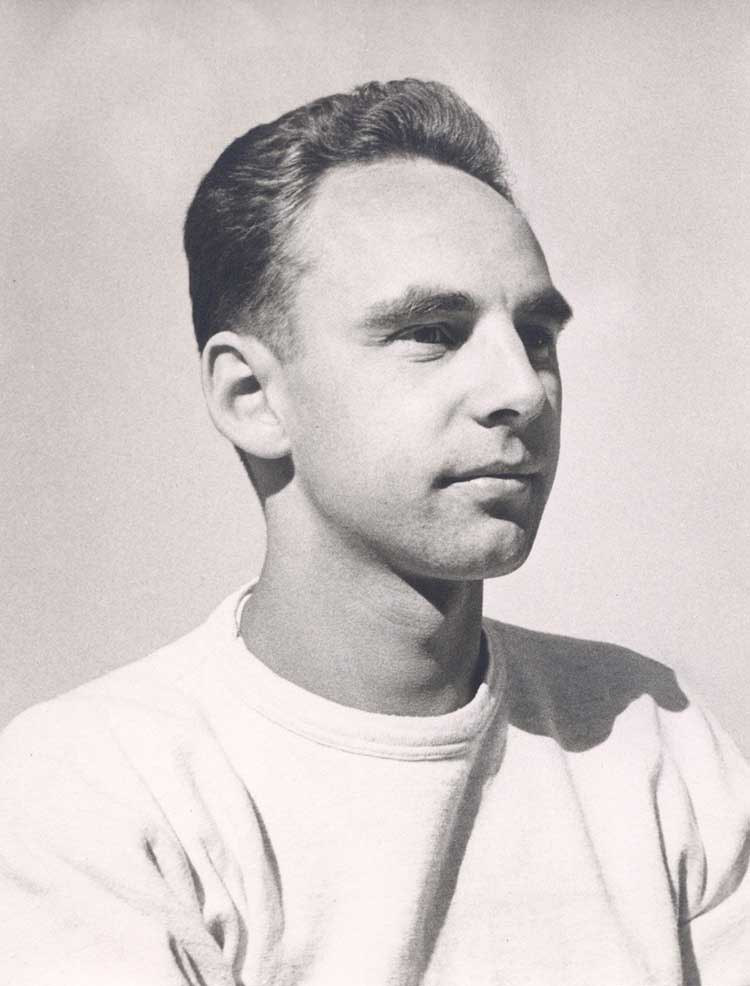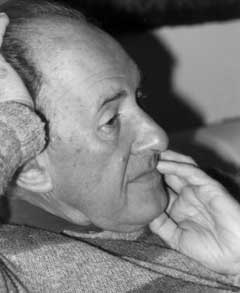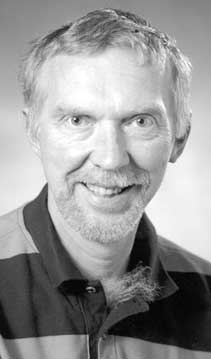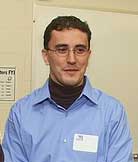Banquet Speech (Part 3, the letter Y)
40th Anniversary Symposium
THE LETTER Y --for Young faculty
Another important component of the department, which sometimes gets overlooked, is the young faculty. And for that, we have letter Y:
 Y are Young Faculty, which every dept needs.
Y are Young Faculty, which every dept needs.
Upon their work the depts’ fame proceeds.
When did the H’s win Turing Awards?
When they were old, and bored, and on Boards.
When was the work that gave them reward?
Ten years from cutting their PhD `bilical cord. ["PhD" is pronounced "Fould"]
The point is that these guys —Juris Hartmanis and John Hopcroft— did their Turing-Award work when they were young faculty. And all the older faculty did their more important work before they were 10 years from their PhD! Yes, it's the young faculty whose research invigorates and enlivens.
JURIS HARTMANIS
Yes, even Hartmanis was young once. Actually, the two pictures on the left are from a slightly earlier period; I think he was 18 or 19 at a time, with a normal haircut and an Elvis Presley haircut. The third picture shows what he looked like when he took over the chairmanship in 1965, and the last shows him about 5 years ago. Besides being Chair of CS for about 13 years total, Juris served as an Assistant Director of the NSF for two years, and he is now Senior Associate Dean of CIS at Cornell. |
 |
 |
 |
 |
JOHN HOPCROFT
Hopcroft also was wet behind the ears when he did his Turing Award Work. He came to Cornell in 1967. He spent some time at Stanford in the early 1970s, and it was there that he collaborated with student Bob Tarjan on the work on graph theory and planarity-testing algorithms.
John, would you like to say a few words? No, I said that wrong, for he might not like to. John, come forward and talk to the crowd. John has been a mainstay of the department. He served as chair. He was also dean of engineering, he served on the NSF Advisory Board, after being appointed to it by Bush #1. But you haven’t heard from him yet at this celebration, and I think it only fitting that he say a few words.
[John Hopcroft got up and addressed the audience.] Thank you very much, John.
|
 |
 |
GERRY SALTON
If you look at the older faculty, you’ll see that their work that started them off on the road to fame was done during their first ten years after the PhD. Here’s Gerry Salton, father of information retrieval. You heard from Amit Singhal this afternoon about Gerry and the importance of his work for search engines and the internet. Salton really had vision, starting when he got his PhD! But no one else believed in this vision, and he worked alone for a long time, with people almost ridiculing him. It is a pity that he died before seeing the impact of his work. Gerry’s wife, Mary, is here, along with son Peter and daughter Mariann … Could you please stand up again?
The epitaph for Sir Chris Wren, architect of St. Paul’s Cathedral, reads, “If you wish to see his monument, look around you.” To find Salton’s monument, use any of the many text-based search engines on the Web. |
 |
 |
BOB CONSTABLE
I bet you don’t know who the picture on the left is. Yes, it is Bob Constable! He was getting gray and bald when he first came to Cornell in 1968. Now, he is a distinguished Dean of the Faculty of Computing and Information Sciences, a college-level unit that is due largely to his creativity and leadership. He worked in recursive function theory until he got the theorem-proving and program-verification bugs and started the great work (in 1974) that led to his well-known system for mathematical reasoning, NuPrl.
|
 |
 |
DAVID GRIES
And me, too, if I did anything of lasting interest, it was before 1976, and I got my Dr. rer. nat. (pronounced "rare nut") in 1966. Of course it was my PhD students who really did the work. Susan Owicki, for example, developed fundamental ideas for proving parallel programs correct.
|
 |
 |
The Youngbloods
And today, it is our young faculty that are producing the excitement.
What department has a Gun Sirer [top left], whose peer-to-peer name service for the Internet has been deployed to serve the Internet domain name space for all of China?
What department has a Paul Francis [top middle], whose network address translation NAT solved a looming IP address crisis and allowed you to have a local network in your home?
What department has a Steve Marschner [top right], who won a technical Oscar for his skin-rendering model, which was used for Gollum and other characters?
What department has a Jon Kleinberg [bottom middle], whose hubs-and-authorities model changed how search engines rank pages and earned him a Macarthur Genius Award?
What department has a Claire Cardie [bottom left] and Lillian Lee, whose work on sentiment analysis has changed how people think of that field?
|
|
|
|
There are more young faculty, but this should give you an idea of the impact they all are having and how important they are to the success of this department.
Mentoring young faculty & the tenure process
Of course, the older faculty have to do a certain amount of mentoring and give the young bloods directions. They do need direction and mentoring. You can’t leave them to their own devices. On the top to the right, Dean Constable and Chair Van Loan are giving directions to two assistant professors.
And, when it comes to preparation for tenure, we do have our hazing procedures to ensure that the tenure applicant has the stamina to handle the stresses of being a tenured faculty member.
|
|
|
|
PRINCIPLES FOR CONTINUED SUCCESS
Why, you may ask, do we continue to get the best young faculty? That fact rests on several principles that we have always followed and I hope will continue to follow.
- First, maintain a comfortable, collegial environment in which everyone can prosper.
- Second, hire only the best young faculty, regardless of area, and welcome them as full members of the department.
- Third, when the opportunity arises, hire a brilliant senior person to help the department move in a desired direction.
- Fourth, admit only the best graduate students, for they really are a vital component of the research arm.
Collegiality is important, as we say on page 6 of our 40th anniversary booklet. Christmas parties, picnics, Upson Quotations, award ceremonies —all of these are ways in which we try, not always successfully, to maintain collegiality.
Of course, we do get into arguments, which can last for weeks. We fight for what we believe in. We work at them until all agree, one way or another.
And if we can't agree, well, there are other ways, as shown to the right. |
 |
 |
 Y are Young Faculty, which every dept needs.
Y are Young Faculty, which every dept needs.



























